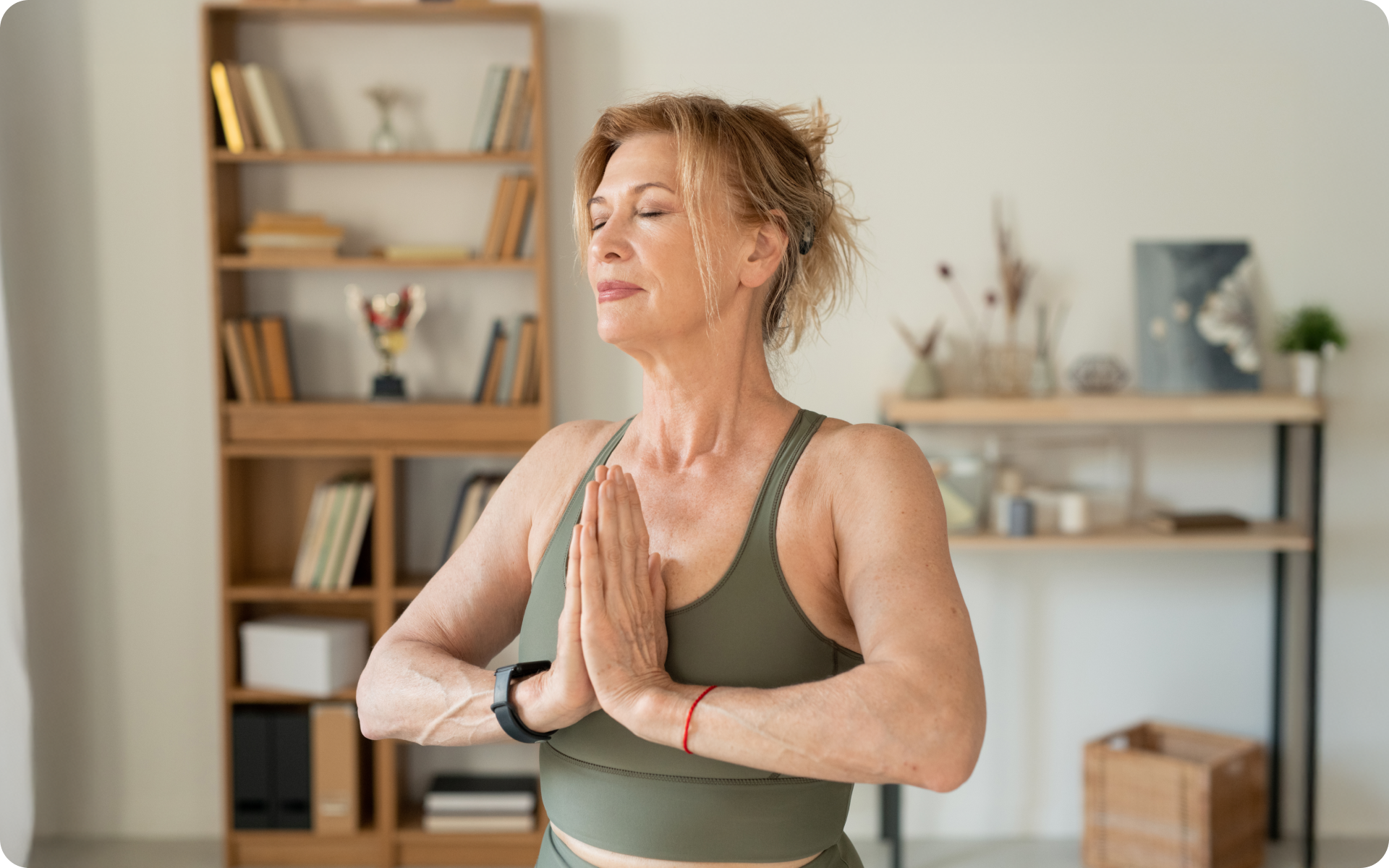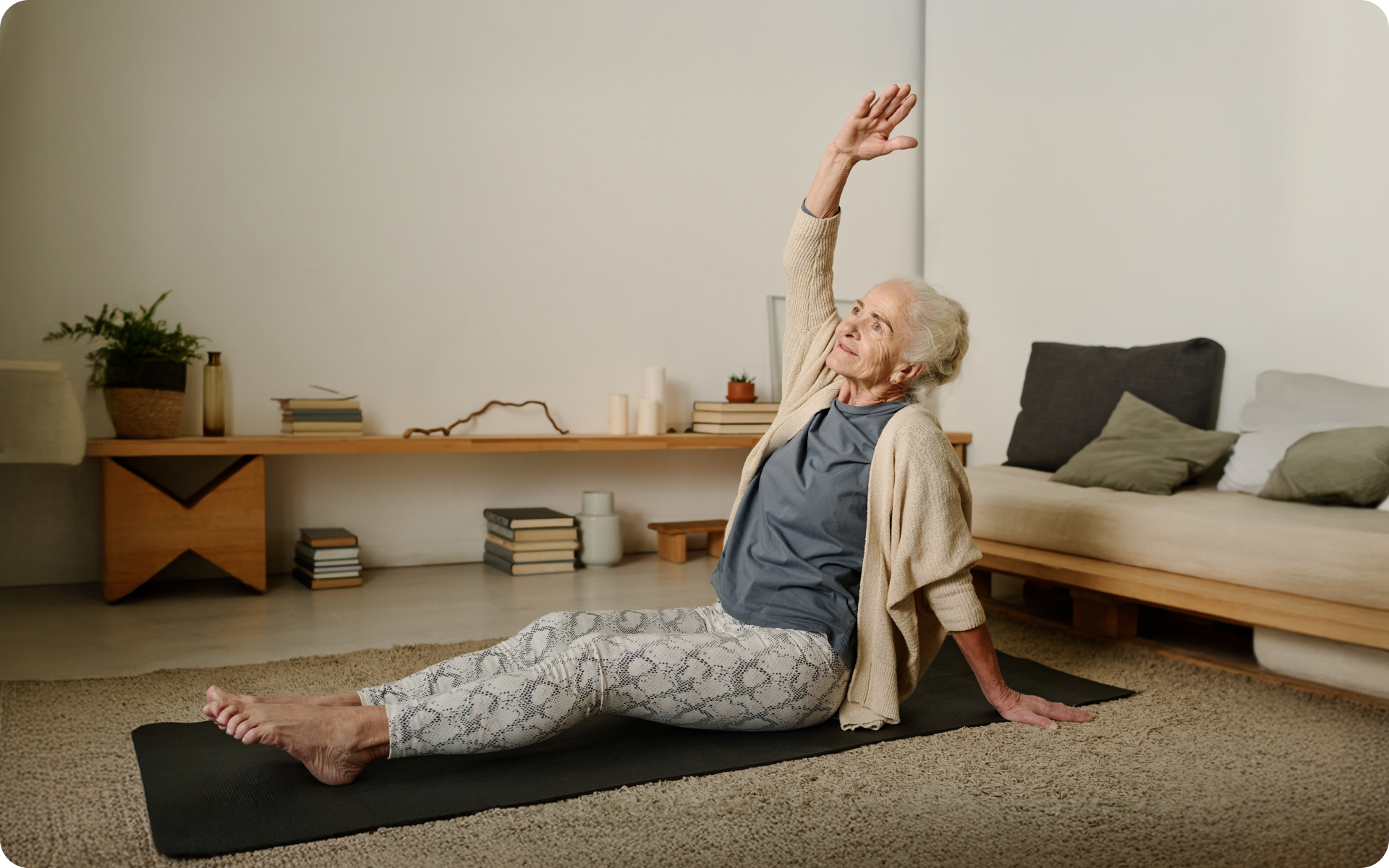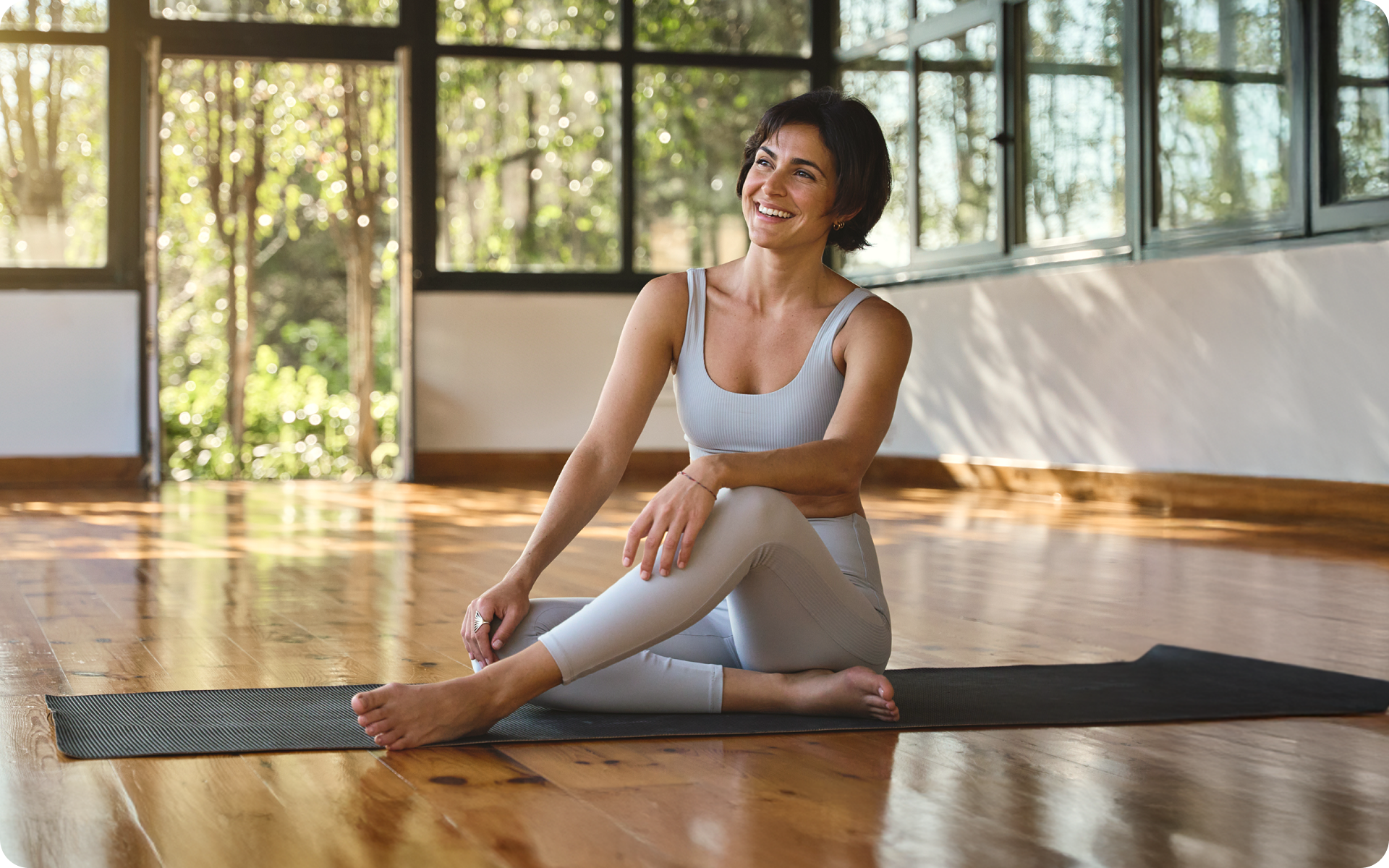If you’ve thought laying on the beach to get a tan with the sounds of gentle waves crashing on the shore was the pinnacle of relaxation, think again. Yoga, the ancient practice of connecting mind, body, and spirit, takes on a whole new dimension when combined with the serene ambiance of the beach.
As a yogi who has spent countless sunrises perfecting my asanas on sandy shores, I can assure you that the experience is unparalleled. The salty air fills your lungs, the rhythmic lullaby of the sea syncs with your heartbeat, and the warmth of the sun enhances the flexibility of your muscles. It’s a symphony of nature that guides you into deeper states of mindfulness and tranquility.
Whether you’re a seasoned yogi or just starting your journey, beach yoga offers a unique challenge and invigorating refreshment to your regular practice. With that thought, roll out your mat on the warm sand, let the ocean be your soundtrack, and join me as we explore 10 beach yoga poses perfect for beginners.
Can You Do Yoga On A Beach?
Absolutely, you can do yoga on a beach! Not only is it possible, but it also brings a unique set of benefits that make it a truly remarkable experience.
Benefit 1: Connection With Nature
Yoga, by its very essence, aims to connect us with our natural state of being (2). When you practice yoga on the beach, you are immersed in nature, surrounded by the sky, sea, and sand. This direct contact with the elements can deepen your sense of connection and unity with the world around you.
The sounds of the waves and birds, the feel of the sand beneath your feet, and the sight of the vast ocean and sky can all serve to heighten your awareness and presence during your practice.
In addition, this connection with nature can also foster a sense of inner peace and tranquility. The beach environment is inherently calming and restorative. By aligning your yoga practice with these natural rhythms, you can enhance the mental and emotional benefits of your practice, promoting greater relaxation, stress relief, and overall well being.
Read more: Morning Workout Benefits: The 12 Best Ways They Improve Your Health
Benefit 2: Enhanced Physical Challenge
Practicing yoga on the beach provides a unique physical challenge in comparision to a traditional indoor setting. When you perform beach yoga poses, the unstable surface of the sand activates different muscle groups and requires increased focus and balance. This can help to enhance your strength, stability, and coordination.
In addition, the open space of the beach allows for a greater range of movement. You can explore new poses and sequences that might not be possible in a confined indoor space.
The natural resistance of the sand can also add intensity to your practice, helping to build strength and endurance.
Benefit 3: Vitamin D Boost
One of the key benefits of beach yoga is the opportunity to soak up some natural sunlight. Sunlight is a primary source of Vitamin D, which plays a crucial role in various bodily functions including bone health, immune function, and mood regulation (5) (6).
While practicing yoga on the beach, your body absorbs this vital nutrient, enhancing the health benefits of your practice. Remember, too much sun exposure can be harmful, so it’s important to practice early in the morning or late in the afternoon when the sun is less intense, thus protecting your skin with sunscreen or (3) (4).
BetterMe app will provide you with a host of fat-frying fitness routines that’ll scare the extra pounds away and turn your body into a masterpiece! Get your life moving in the right direction with BetterMe!
Benefit 4: Opportunity For Aqua Yoga
Beach yoga poses also provide an opportunity to explore aqua yoga. This form of yoga is performed in water (either sea or pool) and offers numerous benefits.
The buoyancy of water reduces impact on joints, making it an excellent option for those with joint pain or mobility issues. Furthermore, water provides a natural resistance that can help strengthen and tone muscles.
Performing yoga poses in water also requires extra balance and stability, enhancing your core strength and coordination. Plus, the cooling effect of water can make your practice more comfortable and refreshing, especially on hot days.
Is Water Yoga A Thing?
Yes, water yoga is a thing! This form of yoga combines regular yoga poses and breathing techniques with movements performed in the water. It can be practiced in both shallow and deep waters depending on your preferences and skill level.
Water yoga also offers a truly unique sensory experience. The sensation of water against your skin can be exceptionally soothing, promoting further relaxation and stress relief. The sound of water can also enhance your focus and mindfulness, helping you to stay present during your practice.
Furthermore, just like beach yoga, water yoga allows you to connect with nature. Practicing in the sea lets you experience the rhythm and flow of the waves, creating a sense of harmony and balance in your practice.
10 Beach Yoga Poses For Beginners
Practicing yoga on the beach is a great way to bring physical and mental benefits into your practice. Here are 10 beach yoga poses perfect for beginners:
Downward Facing Dog (Adho Mukha Svanasana)
The Downward Facing Dog, or Adho Mukha Svanasana, is a rejuvenating pose known for its ability to stretch the muscles of the legs, hands, calves, and inner thighs. It also helps strengthen your wrists, arms, and shoulders, and provides relief from stress by calming the brain. This pose serves as a great transitional pose and can be used as a resting position.
Steps to perform this pose:
- Stand barefoot on your mat, taking extra care to plant your feet firmly in the sand.
- Bend forward from your waist and place your palms on the sand, slightly ahead of your shoulders.
- Slowly walk your feet back until your body forms an inverted ‘V’.
- Push down into your palms and lift your hips up and back.
- Keep your knees slightly bent if you need to, but aim to straighten them over time and push your heels gently towards the ground.
- Stay in this pose for 5-10 breaths, then gently lower your body back to the sand.
Tree Pose (Vrksasana)
The Tree Pose, or Vrksasana, is a balancing pose that helps promote concentration and awareness while also strengthening the legs and core.
Steps to perform this pose:
- Start by standing with your feet hip-width apart.
- Shift your weight onto your right foot and bring the sole of your left foot up to the inside of your right thigh or calf, avoiding the knee.
- Join your palms together in front of your chest.
- Maintain balance and focus on a fixed point ahead of you.
- Hold for a few breaths, then slowly lower your left foot back to the ground and repeat on the other side.
Note: The uneven sand makes this pose more challenging, so don’t worry if you wobble a bit! That’s part of the fun and the challenge of beach yoga.
Shoulder Stand (Sarvangasana)
The Shoulder Stand, or Sarvangasana in Sanskrit, is often referred to as the “queen of all poses”. This inversion pose reverses the flow of gravity, helping to stimulate the lymphatic system and provide fresh oxygenated blood to the brain. It’s also a wonderful pose for improving balance and core strength.
To perform on the beach:
- Lie flat on your back on the sand with your hands by your sides.
- Bend your knees and bring them towards your chest, then lift your hips off the ground.
- Support your lower back with your hands, keeping your elbows close to your body.
- Extend your legs straight up towards the sky, aiming to bring your body into a straight line.
- Hold the pose for a few breaths, then gently lower your legs and release your hands to return to the starting position.
Plow Pose (Halasana)
The Plow Pose, or Halasana, is a deep stretch for the spine and shoulders. It can aid digestion, calm the mind and help alleviate stress.
To perform on the beach:
- Start in the Shoulder Stand pose.
- Slowly lower your feet over your head towards the sand behind you.
- Keep your hands supporting your back or if it feels comfortable, you can straighten your arms out on the sand.
- Hold for a few breaths before slowly rolling your spine back down to the sand.
Easy Pose (Sukhasana)
The Easy Pose, or Sukhasana, is a seated pose that promotes inner calm. It opens the hips, lengthens the spine and promotes groundedness and inner calm.
To perform on the beach:
- Sit on the sand and cross your legs, placing each foot beneath the opposite knee.
- Rest your hands on your knees, palms down.
- Lengthen your spine, relax your shoulders and close your eyes.
- Hold the pose while taking deep, calming breaths.
High Lunge Pose (Ashta Chandrasana)
High Lunge Pose, or Ashta Chandrasana, strengthens the legs, opens the hips and chest, and prepares the body for more challenging balance poses.
To perform on the beach:
- Start in Mountain Pose (Tadasana) with your feet hip-width apart.
- Step your right foot back, planting it firmly in the sand and keeping both legs straight.
- Inhale and lift your arms up over your head, palms facing each other.
- Exhale and bend your left knee, bringing your upper body down towards the sand.
- Hold the pose for a few breaths before slowly returning to Mountain Pose. Repeat on the other side.
Warrior I Pose (Virabhadrasana I)
Warrior I Pose, or Virabhadrasana I, is one of the powerful beach yoga poses. It strengthens the legs and core, opens the chest and hips, and cultivates focus, stability and grounding.
To perform on the beach:
- From High Lunge Pose, rotate your back foot so it’s flat on the sand.
- Keep your front knee bent and turn your torso to face forward.
- Reach your arms overhead and gaze up towards your hands.
- Hold the pose for a few breaths, then switch sides.
Warrior II Pose (Virabhadrasana II)
Warrior II Pose, or Virabhadrasana II, builds strength and endurance. It stretches the legs and groin while opening the chest and shoulders.
To perform on the beach:
- From Warrior I, open your hips and shoulders to the side.
- Extend your arms out to the sides, parallel to the sand.
- Gaze forward over your front hand.
- Hold the pose for a few breaths, then switch sides.
Upward Facing Dog (Urdhva-Mukha-Svanasana)
The Upward Facing Dog, or Urdhva-Mukha-Svanasana, is a back-bending pose that stretches and strengthens the spine, arms, and wrists. It also stimulates the organs of the abdomen and lungs.
To perform on the beach:
- Lie face-down on the sand with your legs extended behind you.
- Place your hands under your shoulders and press down to lift your upper body and hips off the sand.
- Open your chest, pull your shoulders back, and look straight ahead or upwards.
- Hold the pose for a few breaths, then lower your body back to the sand.
Bow Pose (Dhanurasana)
The Bow Pose, or Dhanurasana, is a back-bending pose that strengthens the back muscles and increases spinal flexibility. It also opens the chest, abdomen, quadriceps, ankles, groins, hip flexors, and throat.
To perform on the beach:
- Lie face down on the sand, bend your knees and reach your hands back to hold your ankles.
- Pull with your hands and push with your legs until only your abdomen is on the sand.
- Lift your head and chest and look straight ahead.
- Hold the pose for a few breaths, then release your ankles and lower them back to the sand.
Beach Yoga Tips For Success And Safety
Now that you know what to do, here are some tips for success and safety while practicing beach yoga:
- Choose the right time: Early morning or late evening are ideal times to practice beach yoga as the temperatures are cooler and the sun is less intense.
- Use sun protection: Protect your skin with a sunscreen of at least SPF 30. Wear a hat or use a yoga umbrella for additional shade if necessary.
- Stay hydrated: The heat and sun can cause you to sweat more than usual, so be sure to drink plenty of water before, during, and after your practice.
- Use a beach-friendly mat: A thick, sturdy mat or a beach towel can provide a good base on the sand. You could also try using a yoga towel, which is thin and non-slip.
- Mind your balance: Sandy surfaces can be uneven, making balance poses more challenging. Start with simpler poses and gradually try more complex ones as you feel comfortable.
- Respect nature: Be mindful of beach wildlife and vegetation. Always pick up and dispose of any trash and leave the beach as you found it.
- Listen to your body: The heat, sun, and physical exertion can be intense, so listen to your body. If you start feeling dizzy, lightheaded, or overly tired, take a break.
- Warm up properly: The soft sand can strain your muscles, so ensure you do a proper warm-up before starting your yoga routine.
- Cool down: After your session, take time to cool down and stretch to prevent muscle stiffness.
- Enjoy the experience: Lastly, remember to enjoy yourself. The sound of the waves, the warmth of the sun, and the feel of the sand beneath you all add to the unique experience of beach yoga. Take the time to soak it all in!
Read more: Beach Workout No Equipment: 8 Bodyweight-Only Exercises To Try
Frequently Asked Questions
What is Swimming Yoga?
Swimming yoga, also known as aqua yoga or pool yoga, is a form of exercise that combines the principles and movements of yoga with the resistance and buoyancy provided by water. It is particularly beneficial for swimmers as it helps improve flexibility, balance, and strength while minimizing the risk of injury.
Yoga poses adapted for the water can also help enhance breathing efficiency, improve mental skills, and facilitate quicker recovery after intense swimming sessions.
Why Does the Beach Relax Me?
The beach is a natural source of relaxation due to several factors. The rhythmic sound of the waves crashing can have a calming effect on our minds, similar to the effects of meditative practices.
Additionally, the open space and vastness of the sea can give us a sense of perspective and peace.
Sunlight exposure at the beach can also boost our mood by increasing our vitamin D levels and stimulating the production of serotonin, a hormone associated with feelings of happiness and well-being (1).
What Do You Need for Beach Yoga?
For beach yoga, you’ll need comfortable clothing that allows for a range of movement. A yoga mat, towel, or blanket can be useful for certain poses, though some prefer practicing directly on the sand. It’s also a good idea to have sunscreen, sunglasses, and a hat for sun protection.
A water bottle to stay hydrated is essential too. Lastly, an open mind and a positive attitude are key to truly embracing your beach yoga practice.
If you’ve mustered up the courage to crush your weight loss goal, let Betterme take the sting out of this demanding process. Our app will help you restructure your habits, remold your life and crank up your fitness results!
The Bottom Line
Practicing beach yoga poses is not only a serene and delightful experience, but it also offers unique challenges and benefits. These 10 beginner-friendly poses, from Downward Facing Dog to Bow Pose, are perfect for making the most of your seaside yoga session.
DISCLAIMER:
This article is intended for general informational purposes only and does not serve to address individual circumstances. It is not a substitute for professional advice or help and should not be relied on for making any kind of decision-making. Any action taken as a direct or indirect result of the information in this article is entirely at your own risk and is your sole responsibility.
BetterMe, its content staff, and its medical advisors accept no responsibility for inaccuracies, errors, misstatements, inconsistencies, or omissions and specifically disclaim any liability, loss or risk, personal, professional or otherwise, which may be incurred as a consequence, directly or indirectly, of the use and/or application of any content.
You should always seek the advice of your physician or other qualified health provider with any questions you may have regarding a medical condition or your specific situation. Never disregard professional medical advice or delay seeking it because of BetterMe content. If you suspect or think you may have a medical emergency, call your doctor.
SOURCES:
- Benefits of Sunlight: A Bright Spot for Human Health (2008, ncbi.nlm.nih.gov)
- Exploring the therapeutic effects of yoga and its ability to increase quality of life (2011, ncbi.nlm.nih.gov)
- Sun exposure as a strategy for acquiring vitamin D in developing countries of tropical region: Challenges & way forward (2021, ncbi.nlm.nih.gov)
- Sunscreens (2014, pubmed.ncbi.nlm.nih.gov)
- Vitamin D in health and disease: Current perspectives (2010, biomedcentral.com)
- Vitamin D: The “sunshine” vitamin (2012, ncbi.nlm.nih.gov)













